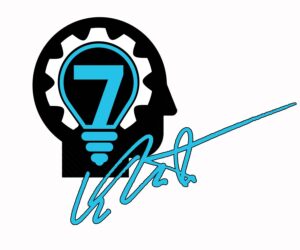(Article 15 in the Sales series)
The decision to buy has been made at this point but not officially rendered. The biggest misconception about closing the sale is that the decision is happening at the end vs. throughout the conversation. This creates a lot of pressure on both the client and the salesperson – which never feels good to anyone.
This misconception and lack of training are what cause the bulk of what we all know as “high-pressure” sales tactics. Anytime a decision is actually made, a certain amount of tension is unavoidable.
If you want to maximize your buying frequency, your job is to minimize that stress and spread it out during the conversation.
If you are a salesperson, your job is to tackle each presentation as if you were a professional gambler in Vegas. What sort of gambling system will you utilize to give you the very best odds of winning hands over thousands of interactions? Professional gamblers approach the game the same way as the casinos. What sort of intentional behavior will result in a successful outcome with the highest frequency?
Many salespeople wing it way too often and are hoping that they will get lucky.
What a horrible strategy.
Obviously, I am pounding home the idea that questions, concerns and objections should be encouraged and even invited early in the conversation to clear the air for the wrap up of the sale. This clears a path for the client to make an informed and uncluttered decision.
You still need a straightforward process to lead the client to make the decision. However, it’s in your best interests to eliminate all misunderstandings and issues before you ask the client to officially decide.
Let’s recap the 4-5 prior decisions that a client makes before they are willing to decide to purchase from you:
- Do they like you?
- Do they trust you?
- Do they like the idea of what you’re proposing?
- Do they fully understand what it does?
- How much will it cost them?
- How much of a hassle will it be for them?
- Are they willing to make a change?
All of those decisions need to be anticipated, planned for, and addressed when they are at the forefront of the client’s mind.
I’ll restate that because it’s that critical.
Successful salespeople understand the different emotional and logical “gates” that the buyer will go through and customize a conversation accordingly.
In other words, it’s not about you. The conversation should be set up around the emotional and logical needs of the client.
If we have done all the proper sequencing during the conversation with the client, the runway to the decision is clear. All we have to contend with is a client’s natural reluctance to make a decision, which is still a big deal but much simpler if we have handled all the other decisions a client makes during a presentation.
Natural reluctance is very common and if there are still unresolved questions or concerns, you will hear a ton more maybe’s from clients.

Business owners and Entrepreneurs are invited to take my Free Online Assessment on the main page of the 7th Gear Website.
Other Articles of the Sales Series:










